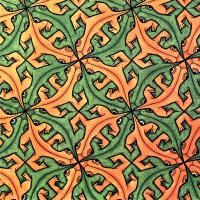Aportes: 15
Idioma: English
sudanglo (Mostrar perfil) 9 de noviembre de 2013 12:38:31
why do you prefer the conjugated verb form kirliĝis after the prepositional phrase ĉirkaǔ ni rather than before as I had put it originally?My first instinct was to reply that I have no idea. But on reflection I see that there might be two principles involved her.
One is simply the syllabic rhythm, the other is that variations of word order in Esperanto emphasize or de-emphasize.
In this description the kirliĝo is more important than the ĉirkaŭ ni.
Some word orders are neutral. Deviations from the more normal order tend to highlight.
Compare Mi scias tion and Tion mi scias.
jismith1989 (Mostrar perfil) 9 de noviembre de 2013 13:41:17
So: Folioj ĉirkaŭkuris nin ruĝantaj, iom orantaj kaj brunantaj.
Those verbs aren't all in the Esperanto-English vortaro at the side, but they're certainly proper (and idiomatic) Esperanto; they are all in the Esperanto-Italian or -French vortaro, for example. I also added the iom to show how the verbs could be modified, but mainly because I think it has a nice rhythm like that (and because gold is after all rare -- though maybe not in leaves!). I wasn't especially trying to achieve it, but for anyone who knows a bit about literature, that line is also iambic based on the regular Esperanto stress system (which just means that it has a constant ba-DUM rhythm). My word order isn't necessarily the most intuitive to grasp, but it is poetry, and the lack of the accusative (i.e. final N) on the participles shows that they go with the leaves and not nin.
jkph00 (Mostrar perfil) 9 de noviembre de 2013 21:57:34
sudanglo:A very nice distinction and one I will use. Bravo, Sudanglo, and thanks once more! I'm curious: are you a poet, too?why do you prefer the conjugated verb form kirliĝis after the prepositional phrase ĉirkaǔ ni rather than before as I had put it originally?My first instinct was to reply that I have no idea. But on reflection I see that there might be two principles involved her.
One is simply the syllabic rhythm, the other is that variations of word order in Esperanto emphasize or de-emphasize.
In this description the kirliĝo is more important than the ĉirkaŭ ni.
Some word orders are neutral. Deviations from the more normal order tend to highlight.
Compare Mi scias tion and Tion mi scias.
jkph00 (Mostrar perfil) 9 de noviembre de 2013 21:59:53
jismith1989:Perhaps the most idiomatic, poetic and Esperanto-esque way of all would be to have the colours as verbs (well, participles), rather than adjectives or even nouns. Like in the famous phrase la ĉielo bluas.That's magical to be sure! I begin to appreciate why Auden so liked this language. Thank you!
So: Folioj ĉirkaŭkuris nin ruĝantaj, iom orantaj kaj brunantaj.
Those verbs aren't all in the Esperanto-English vortaro at the side, but they're certainly proper (and idiomatic) Esperanto; they are all in the Esperanto-French vortaro, for example. I also added the iom to show how the verbs could be modified, but mainly because I think it has a nice rhythm like that (and because gold is after all rare -- though maybe not in leaves!). I wasn't especially trying to achieve it, but for anyone who knows a bit about literature, that line is also iambic based on the regular Esperanto stress system (which just means that it has a constant ba-DUM rhythm). My word order isn't necessarily the most intuitive to grasp, but it is poetry, and the lack of the accusative (i.e. final N) on the participles shows that they go with the leaves and not nin.
sudanglo (Mostrar perfil) 10 de noviembre de 2013 13:43:08
are you a poet, too?Not at all JK. The closer poetry is to prose the more I like it.
She looked as though she had been poured into her dress by someone who didn't know how to say when (PG Wodehouse) That's proper poetry.
Far better than Tiger, tiger burning bright ... What is this? Spontaneous combustion in the animal kingdom, or hideous cruelty?



